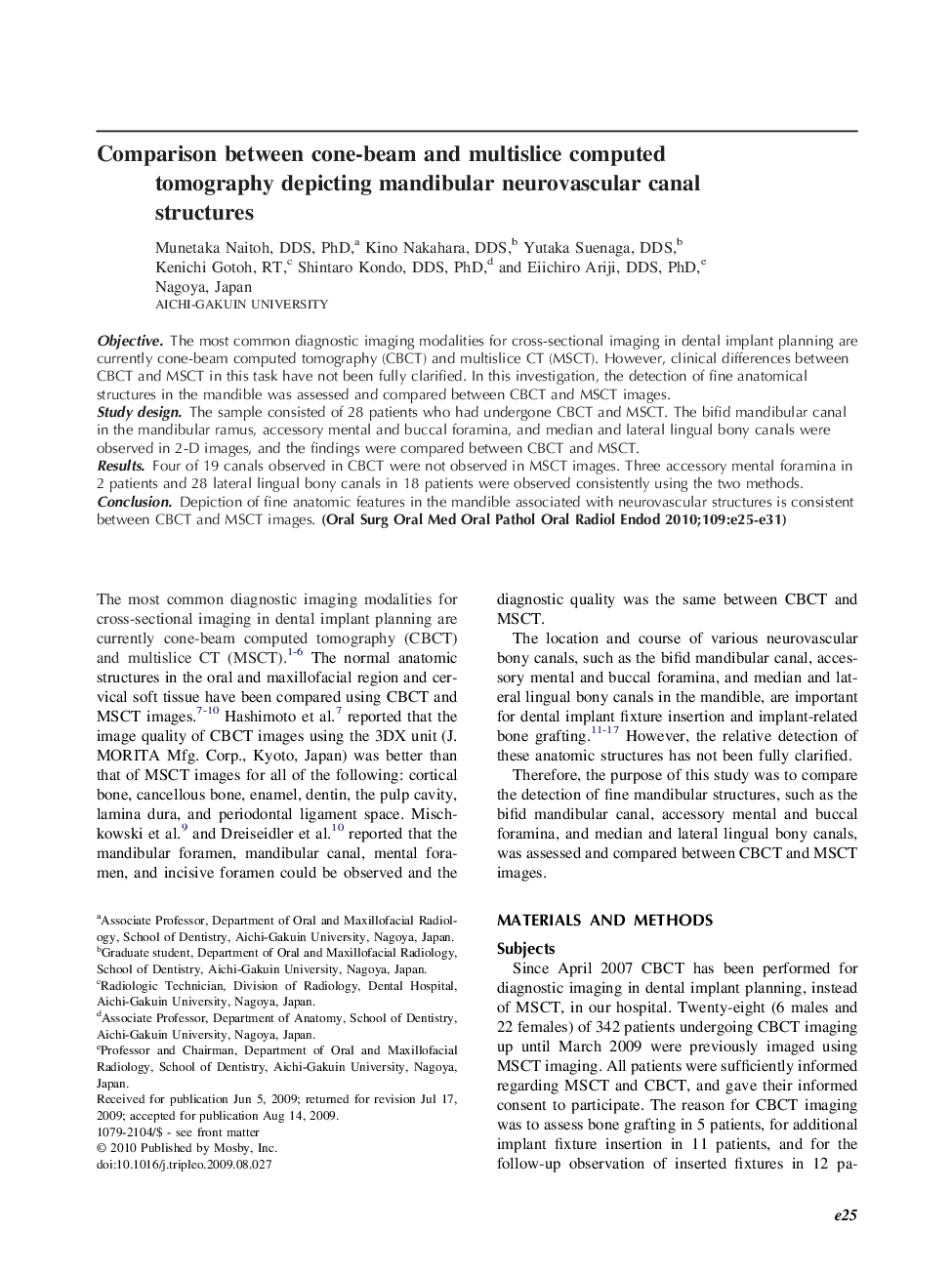| Article ID | Journal | Published Year | Pages | File Type |
|---|---|---|---|---|
| 3167749 | Oral Surgery, Oral Medicine, Oral Pathology, Oral Radiology, and Endodontology | 2010 | 7 Pages |
ObjectiveThe most common diagnostic imaging modalities for cross-sectional imaging in dental implant planning are currently cone-beam computed tomography (CBCT) and multislice CT (MSCT). However, clinical differences between CBCT and MSCT in this task have not been fully clarified. In this investigation, the detection of fine anatomical structures in the mandible was assessed and compared between CBCT and MSCT images.Study designThe sample consisted of 28 patients who had undergone CBCT and MSCT. The bifid mandibular canal in the mandibular ramus, accessory mental and buccal foramina, and median and lateral lingual bony canals were observed in 2-D images, and the findings were compared between CBCT and MSCT.ResultsFour of 19 canals observed in CBCT were not observed in MSCT images. Three accessory mental foramina in 2 patients and 28 lateral lingual bony canals in 18 patients were observed consistently using the two methods.ConclusionDepiction of fine anatomic features in the mandible associated with neurovascular structures is consistent between CBCT and MSCT images.
